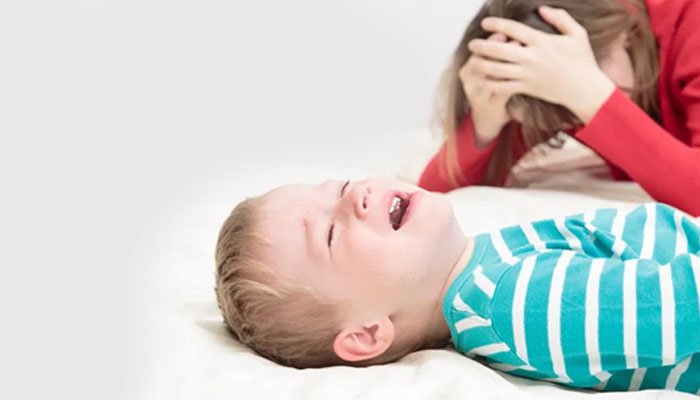- +91 7680015156
- advaithacdc@gmail.com
Retained Primitive Reflexes that Cause Sensory Sensitivities
- Home
- Blogs
- Retained Primitive Reflexes that Cause Sensory Sensitivities
Approximately 80% of children in a typical classroom are active, engaged, and perform well academically. However, the remaining 20% may face unique challenges related to learning and development. These students may remain in mainstream classrooms but often struggle due to sensitivities like loud sounds, bright lights, strong odors, or specific textures. Many experience heightened anxiety, live in a constant “fight or flight” mode, and have difficulties concentrating.

How Retained Primitive Reflexes Impact Sensory Processing
Many parents are unaware that these challenges are often linked to retained primitive reflexes—early movement patterns developed in the womb that should disappear as the child matures. Two specific reflexes, the Moro reflex and the Fear Paralysis reflex, are typically at the root of these sensory and behavioral issues. When these reflexes remain active, they can disrupt the child’s ability to process sensory input and regulate emotions effectively.
The Role of the Moro and Fear Paralysis Reflexes
These two reflexes often function as a pair, affecting the child’s ability to focus and perform academically. The Fear Paralysis reflex must integrate first to allow the Moro reflex to emerge and subsequently integrate. Failure to integrate these reflexes can block the development of other critical reflexes, delaying learning, movement coordination, and emotional regulation.
Fear Paralysis Reflex
Emerging early during fetal development, the Fear Paralysis reflex should ideally integrate before birth. When it remains active, children may react strongly to unfamiliar environments or challenges with extreme fear or withdrawal. In the classroom, this could manifest as refusal to enter the room, crying, hiding, or running away from new situations.
Moro Reflex
The Moro reflex, commonly known as the startle reflex, appears around 9–12 weeks of gestation and should integrate by 3–4 months post-birth. When retained, children may overreact to sudden stimuli such as loud noises or bright lights. Unlike the typical startle response in adults, which is brief and manageable, children with a retained Moro reflex may scream, cry, or have meltdowns in response to minor triggers. This can also affect eye coordination, which is crucial for reading and writing.
Challenges Associated with Unintegrated Reflexes
Academic Difficulties
Children with retained reflexes may experience:
- Reading issues: Difficulty with eye tracking, focusing on text, and following lines on a page.
- Writing delays: Poor hand-eye coordination and challenges maintaining posture for writing.
- Concentration struggles: Sensory overload and poor focus due to visual or auditory distractions.
Behavioral and Social Concerns
As these reflexes persist, behavioral problems become more prominent. These children often live in a heightened state of stress, which makes adapting to changes in routine or social environments difficult. They may withdraw socially and exhibit heightened emotional responses to perceived threats.
Physical and Vestibular Challenges
Unintegrated reflexes can cause poor balance, coordination, and spatial awareness, making it difficult for the child to sit still, engage in physical activities, or develop basic motor skills.
Mealtime Red Flags
Many children with a retained Moro reflex show signs during meals, such as:
- Craving sugary foods due to increased cortisol levels.
- Avoiding specific food textures.
- Eating only a limited variety of foods.
- Complaining of frequent headaches.
Helping Children Regulate and Integrate Reflexes
Simple breathing exercises can support a child’s nervous system. Have your child watch their hand as it moves with each breath—up and down, in and out. This helps slow the heart rate and promotes calmness, allowing them to better regulate their emotions and sensory responses.
Early recognition and intervention can greatly improve a child’s developmental path. By addressing retained primitive reflexes, we can help children unlock their full academic and emotional potential.
Articles
- 7 Strategies to Accomplish Positive Compliance with Retained Primitive Reflex Integration
- Child with Zinc Deficiency may show signs of Learning Challenges
- Hands-Grasping Reflex Delays Handwriting and Speech Development if Retained
- Deep Breathing Activities to Calm Sensory Meltdowns and Ground Emotions
- 3 Retained Primitive Reflexes Responsible for Poor Balance
- toe walking
- Anxious Behavior
- Retained Primitive Reflexes that Cause Sensory Sensitivities
- Retained Primitive Reflexes Causing Picky Eating, Sugar Cravings and Compulsive Eating
- Tactile Defensiveness
- 10 Fun Activities to Boost Your Child's Speech Development
- Exploring Learning through Play: Educational Activities for Kids
- Why Crossing the Midline Activities Helped this Childrens Listen to his Teacher
- Music Therapy: Study Says Music Key for Non-Verbal Children and Children with Speech and Language Delays
- Tactile Toys for Sensory Defensiveness and Tactile Stimulation

